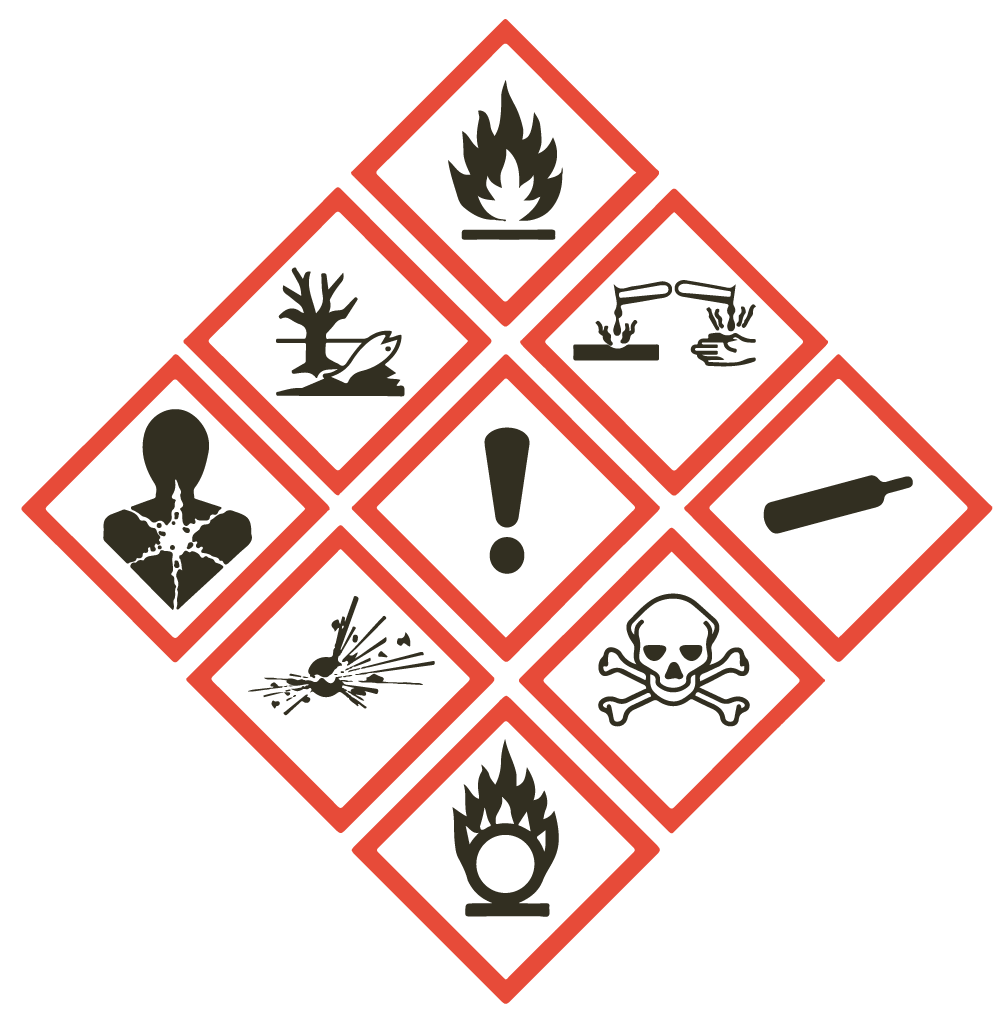What is the GHS?
The GHS unifies information on the Safety of Hazardous Chemicals on a global level through the harmonisation of classification criteria, labelling requirements, and a guide for the preparation of Safety Data Sheets.
The GHS is implemented and maintained by the United Nations in order to prevent varying information on the hazards of Chemicals around the world. It is revised every two years.
Another objective is to streamline the trade of Chemicals: by applying the GHS in different countries, it will not be necessary for a chemical exporting company to reclassify its products and re-label in order to comply with the importing country's requirements.
However, these objectives have not been achieved on a practical level, as the documentation needs to be adapted to each country's legislation.
What does the GHS cover?
It covers:
 All hazardous Chemicals, whether substances or mixtures.
All hazardous Chemicals, whether substances or mixtures.
It does not cover:
- ✘ Pharmaceutical products.
- ✘ Food additives.
- ✘ Cosmetic articles.
- ✘ Pesticide residues in food.

What is the scope of the GHS?
The Globally Harmonized System (GHS) includes criteria for hazard classification and communication.
- Classification: this is the determination of the hazard classes and categories that apply to a certain Chemical.
- •Hazard classes: classification of the properties of the Chemical that can produce a hazardous effect, for example, acute toxicity.
- •Hazard categories: the class is divided into different categories.
There are three types of hazards for classification purposes, with their respective hazard classes and categories:
- • Physical Hazards.
- • Health Hazards.
- • Environmental Hazards.
- Hazard communication: by means of Safety Data Sheets and labelling.
Are all GHS adaptations the same in all countries?
No, the Globally Harmonized System is a “non-binding recommendation" from the United Nations, so it has no type of legal validity by itself.
The provisions of the GHS are binding in countries or regions that adopt the system as a requirement. It may be adopted in whole or in part, as may any of its revised editions.
The main problem is that hazard categories are excluded in some countries but included in others, while each country has a different adaptation of the GHS.
As a consequence of the country-specific adaptations being based on different versions of the GHS:
- • Hazard categories exist in some adaptations and not in others, forcing the products to be reclassified according to the country.
- • Hazard statements and precautionary statements are worded differently, which requires re-labelling.
- • Safety Data Sheets have a different format and content, which makes it necessary to adapt this document to each country.
Below is a non-exhaustive list of the legal provisions incorporated by hazard classification and communication tools (Safety Data Sheets and labelling) in different countries:
- •Argentina: SRT 801/2015
- •Australia: WHS Regulations (2020)
- •Brasil: NBR 14725
- •Canadá: WHMIS 2015
- •Chile: Decreto Supremo nº 57 de 2019
- •China: GB/T 16483, GB/T17519 y GB/T 30000
- •Colombia: Decreto 1496 de 2018
- •Corea de Sur: 제2016-19호
- •Costa Rica: REGLAMENTO TÉCNICO RTCR 481:2015
- •Ecuador: NORMA TÉCNICA ECUATORIANA NTE INEN 2266:2013
- •Estados Unidos: 29 CFR 1910.1200 (HCS 2012)
- •Indonesia: Peraturan No.04/BIM/PER/1/2014
- •Israel: Work Safety Regulations y SI 2302 part 1
- •Japón: JIS Z 7253:2019 y JIS Z 7252:2019
- •Malasia: ICOP y P.U. (A) 310/2013
- •México: NORMA MEXICANA NOM-018-STPS-2015 y Norma Mexicana NMX-R-019-SCFI-2011
- •Nueva Zelanda: Hazardous Substances (Safety Data Sheets) Notice 2017 y HSNO Act
- •Reino Unido: UK REACH y GB CLP Regulation
- •Rusia: GOST 30333-2007, GOST 32419-2013, GOST 32423-2013, GOST 32424-2013 y GOST 32425-2013
- •Serbia: Sl. glasnik RS, br. 100/2011 y Sl. glasnik RS, br. 105/13, 52/17 i 21/19
- •Singapur: SS 586: Part 3:2008 (2014) y SS 586: Part 2:2014
- •Sudáfrica: Regulations for hazardous chemical agents, 2021
- •Suiza: Totalrevision der ChemV/Révision totale de la OChim/Revisione totale dell’OPChim
- •Taiwán: CNS 15030
- •Turquía: “Zararlı Maddeler ve Karışımlara İlişkin Güvenlik Bilgi Formları Hakkında Yönetmelik”e (RG.-13/12/2014-29204) y Resmi Gazete -11.12.2013- 28848 (SEA)
- •Unión Europea: Reglamento (CE) Nº1272/2008 y Reglamento (UE) 2020/878
- •Uruguay: Anexo II de Decreto 307/009 modificado por el Decreto 346/011
- •Vietnam: Thông tư số 32/2017/TT-BCT (phụ lục 9)

